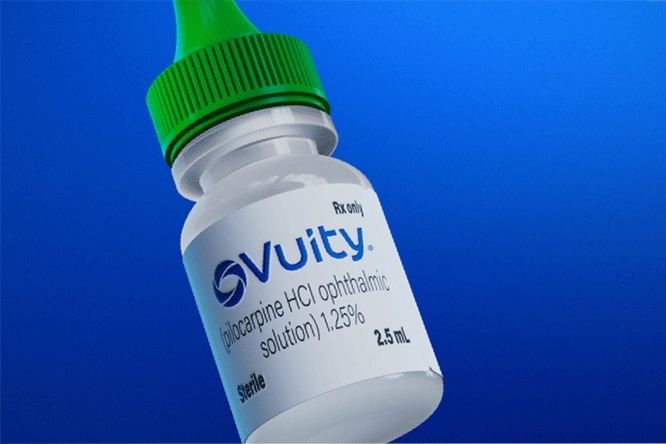
Oral Drug Forms
Oral drug forms are designed to be taken by mouth and can come in various formulations, each with its own characteristics, advantages, and disadvantages. Here are some common types of oral drug forms:
- Tablets: These are solid dosage forms that contain the active ingredient along with excipients. Tablets can be coated or uncoated and may be designed for immediate release or controlled release. They are convenient and easy to store but may require water for swallowing.
- Capsules: Capsules consist of a gelatin shell that encases the drug in powder or liquid form. They can be easier to swallow than tablets and can mask unpleasant tastes. However, they may not be suitable for patients who have difficulty swallowing.
- Liquids: Oral liquids include solutions, suspensions, and syrups. They are often used for pediatric patients or those who cannot swallow pills. Liquids provide rapid absorption but may have a shorter shelf life compared to solid forms.
- Chewable Tablets: These tablets are designed to be chewed before swallowing, making them suitable for children or individuals who have difficulty swallowing whole tablets. They often come in flavored varieties but may contain added sugars.
- Sublingual Tablets: These are placed under the tongue where they dissolve quickly and enter the bloodstream directly, bypassing the digestive system. This route allows for rapid onset of action but is limited to certain drugs that can be effectively absorbed this way.
- Buccal Tablets: Similar to sublingual tablets, buccal tablets are placed between the gums and cheek where they dissolve slowly for systemic absorption. This method also avoids first-pass metabolism in the liver.
- Effervescent Tablets: These tablets dissolve in water before ingestion, releasing carbon dioxide gas which helps with palatability and absorption speed.
- Orally Disintegrating Tablets (ODTs): ODTs dissolve on the tongue without the need for water, making them convenient for patients who have difficulty swallowing pills.
Rectal Drug Forms
Rectal drug forms are administered through the rectum and can also vary significantly in formulation:
- Suppositories: These solid dosage forms melt at body temperature after insertion into the rectum, releasing their active ingredients locally or systemically. Suppositories can be beneficial when oral administration is not possible due to vomiting or unconsciousness.
- Enemas: Liquid formulations administered through the rectum that can deliver medication directly into the lower gastrointestinal tract or provide systemic effects depending on the formulation used (e.g., saline enemas for constipation relief).
- Rectal Creams/Gels/Ointments: These semi-solid preparations are applied directly into the rectum using an applicator or finger and provide localized treatment for conditions such as hemorrhoids or anal fissures.
- Rectal Solutions: Similar to enemas but typically involve smaller volumes of liquid intended for local effect rather than systemic absorption.
- Foams/Suppository Inserts: Some medications come as foams that expand upon insertion into the rectum, providing localized treatment while being easy to administer.
In summary, both oral and rectal drug forms offer unique advantages based on patient needs and specific medical conditions; oral forms tend to be more convenient while rectal forms serve as alternatives when oral administration is impractical.
Various Injectable Drug Forms
Injectable drug forms are categorized based on their route of administration and the type of tissue into which they are injected. The primary injectable drug forms include:
1. Intravenous (IV) Injections
Intravenous injections deliver medications directly into a vein, allowing for rapid absorption into the bloodstream. This method is often used for administering fluids, electrolytes, anesthesia, pain medications, blood products, nutrition, and certain treatments like chemotherapy or monoclonal antibodies for COVID-19. Common IV injection sites include the back of the hands, lower arms, and elbow pits.
2. Intramuscular (IM) Injections
Intramuscular injections involve delivering medication deep into muscle tissue where it can be quickly absorbed due to the rich blood supply in muscles. This form is commonly used for vaccines, antibiotics, corticosteroids, and hormones. Recommended IM injection sites include the upper outer thigh, shoulder muscle (deltoid), and hip area.
3. Subcutaneous (SC) Injections
Subcutaneous injections are administered into the fatty tissue just beneath the skin. They utilize smaller needles to ensure that medication enters the subcutaneous layer rather than muscle tissue. This method is typically slower in absorption compared to IV or IM injections and is commonly used for insulin, heparin, certain vaccines, and palliative care medications. Common SC injection sites include the outer side of the upper arm, front outer thigh, and abdominal area.
4. Intraosseous Injections
Intraosseous injections involve puncturing bone marrow to access veins directly when intravenous access is challenging or impossible. This method is primarily reserved for emergency situations where rapid delivery of fluids or medications is critical.
5. Intradermal (ID) Injections
Intradermal injections are given directly into the dermis layer of skin and are absorbed more slowly than other types of injections. This method is often used for allergy tests and some vaccinations.
6. Other Specialized Injection Types
- Intra-articular Injections: Administered directly into a joint.
- Peri-articular Injections: Given into soft tissues surrounding a joint.
- Intracardiac Injections: Delivered directly into heart muscle or ventricles.
- Intravitreal Injections: Injected into the jelly-like fluid in the eye.
- Intraperitoneal Injections: Given within the abdominal cavity.
- Intracavernous Injections: Administered into erectile tissue in males.
Each injectable form serves specific therapeutic purposes based on how quickly a medication needs to act and its intended effect on the body.
Types of Injections: IV, IM, and ID
In the field of medicine, injections are a common method for delivering medications, vaccines, and other therapeutic agents. The three primary types of injections—intravenous (IV), intramuscular (IM), and intradermal (ID)—differ significantly in their administration techniques and absorption rates.
Intravenous (IV) Injection
An intravenous injection involves administering medication directly into the bloodstream through a vein. This method is typically performed using a syringe or an infusion pump connected to an intravenous catheter.
- Administration: The procedure requires aseptic technique to prevent infection. A healthcare professional locates a suitable vein, often in the arm or hand, cleans the area with an antiseptic solution, and then inserts a needle into the vein. Once the needle is in place, the medication can be injected rapidly or infused over time.
- Absorption Rate: IV injections provide immediate access to systemic circulation, resulting in rapid onset of action. Medications delivered this way bypass all barriers to absorption that would occur with other routes, leading to nearly 100% bioavailability. This makes IV administration particularly useful for emergencies or when quick therapeutic effects are necessary.
Intramuscular (IM) Injection
Intramuscular injections involve delivering medication deep into a muscle tissue. Common sites for IM injections include the deltoid muscle in the upper arm, vastus lateralis muscle in the thigh, and gluteus maximus muscle in the buttocks.
- Administration: Similar to IV injections, IM injections require aseptic technique. A healthcare provider selects an appropriate site based on factors such as age and muscle mass. After cleaning the skin with antiseptic, a needle is inserted at a 90-degree angle into the muscle tissue. The medication is then injected slowly to minimize discomfort.
- Absorption Rate: IM injections have a slower absorption rate compared to IV injections because they rely on diffusion from muscle tissue into systemic circulation. The onset of action can vary depending on factors such as blood flow to the muscle and formulation of the drug (e.g., whether it is aqueous or oil-based). Typically, IM injections take several minutes to hours for full effect.
Intradermal (ID) Injection
Intradermal injections are administered into the dermis layer of skin just beneath the epidermis. This route is commonly used for allergy tests and vaccinations.
- Administration: ID injections require precise technique as they must be delivered just under the skin surface. A small gauge needle is used at a shallow angle (approximately 10-15 degrees). The healthcare provider injects a small volume of medication until a wheal (a raised bump) appears on the skin surface.
- Absorption Rate: The absorption rate for ID injections is slower than both IV and IM routes due to limited vascularization in the dermis compared to deeper tissues like muscles or veins. As such, ID administration is primarily used for localized effects rather than systemic therapy.
Summary of Differences
- Route of Administration:
- IV: Directly into veins.
- IM: Into muscle tissue.
- ID: Into dermis layer of skin.
- Onset of Action:
- IV: Immediate effect.
- IM: Moderate effect; varies by formulation.
- ID: Slowest effect; primarily localized.
- Bioavailability:
- IV: Nearly 100%.
- IM: Varies but generally lower than IV.
- ID: Limited systemic absorption; mainly local response.
- Common Uses:
- IV: Emergency medications, fluids.
- IM: Vaccines, hormones.
- ID: Allergy testing, some vaccines.
In conclusion, understanding these differences helps healthcare professionals choose appropriate injection methods based on clinical needs and desired outcomes.
Comparison of IV Injections: IV Push, IV Infusion, and IV Piggyback
1. Definition and Method of Administration
- IV Push: An IV push involves administering medication directly into the bloodstream using a syringe. This method allows for rapid delivery of the drug, often within seconds to a few minutes. It is typically used in emergency situations or when immediate therapeutic effects are required.
- IV Infusion: An IV infusion refers to the continuous delivery of fluids or medications over an extended period, usually through an infusion pump or gravity drip. This method can take several hours to complete and is commonly used for hydration, electrolyte replacement, or prolonged medication administration.
- IV Piggyback (IVPB): The IV piggyback method involves connecting a secondary bag of medication to the primary IV line. The secondary bag is infused intermittently while the primary fluid continues to flow. This method allows for the administration of medications that need to be given alongside other fluids without interrupting the primary infusion.
2. Speed of Administration
- IV Push: The speed of administration is one of the key advantages of an IV push, as it can deliver medication almost instantaneously, making it suitable for acute care scenarios.
- IV Infusion: The infusion process is slower compared to an IV push, as it delivers medication gradually over time. This method is beneficial for maintaining steady drug levels in patients who require long-term treatment.
- IV Piggyback: Similar to an infusion, the piggyback method allows for a slower delivery compared to an IV push but can be faster than standard infusions since it utilizes existing lines and may overlap with ongoing infusions.
3. Indications for Use
- IV Push: Commonly indicated in emergencies such as cardiac arrest, severe allergic reactions, or acute pain management where immediate action is necessary.
- IV Infusion: Typically used for patients requiring hydration therapy, chemotherapy administration, or those needing consistent medication levels over time.
- IV Piggyback: Often utilized when patients need additional medications that can be administered alongside their primary fluids without needing a separate line, such as antibiotics or certain electrolytes.
4. Complications and Risks
- IV Push: While effective, this method carries risks such as phlebitis (inflammation of the vein), infiltration (fluid leaking into surrounding tissue), and potential adverse reactions due to rapid drug delivery.
- IV Infusion: Risks include fluid overload and complications related to long-term catheter use such as infection or thrombosis at the site of insertion.
- IV Piggyback: Similar risks apply as with infusions; however, there may also be concerns about compatibility between drugs being administered simultaneously through the same line.
5. Cost and Resource Utilization
- IV Push: Generally requires less equipment than infusions or piggybacks but may necessitate more frequent monitoring due to its rapid nature.
- IV Infusion: Requires more resources including pumps and longer nursing time due to continuous monitoring but can be more efficient for long-term treatments.
- IV Piggyback: Offers cost savings by utilizing existing lines but still requires careful monitoring for compatibility and potential interactions between medications being administered concurrently.
In summary, each method has its specific applications based on patient needs and clinical scenarios. Understanding these differences helps healthcare providers choose the most appropriate route for medication administration based on urgency, duration of treatment required, and patient safety considerations.
Contrast of the Various Topical Drug Forms
Topical drug delivery systems are designed to deliver active pharmaceutical ingredients (APIs) directly to the skin or mucous membranes. The choice of formulation can significantly influence the effectiveness of treatment, patient compliance, and the overall therapeutic outcome. Below is a detailed contrast of various topical drug forms:
1. Ointments
Ointments are semi-solid preparations that contain a high proportion of oil compared to water. They are typically greasy and provide an occlusive barrier on the skin, which helps to retain moisture and enhance absorption of the API. Ointments are particularly effective for dry or scaly skin conditions due to their moisturizing properties. However, their greasy nature may not be suitable for all patients, especially those with oily or acne-prone skin.
2. Creams
Creams are emulsions that contain both oil and water, usually in equal proportions. This balance allows creams to be less greasy than ointments while still providing hydration to the skin. Creams are versatile and can be formulated for various skin types and conditions. They tend to absorb quickly into the skin without leaving a heavy residue, making them suitable for use on larger areas of the body.
3. Gels
Gels are clear or translucent formulations that consist primarily of water and a gelling agent. They have a lightweight texture and provide a cooling effect upon application, making them ideal for treating inflammatory conditions such as sunburn or rashes. Gels dry quickly on the skin and do not leave any greasy residue; however, they may not provide as much moisture as ointments or creams.
4. Lotions
Lotions are low-viscosity solutions or suspensions that contain a higher percentage of water compared to oil. They are easy to spread over large areas of skin and are often used for conditions requiring extensive coverage, such as eczema or psoriasis. Lotions can be formulated to be lightweight and non-greasy, making them suitable for oily or acne-prone skin types.
5. Sprays
Sprays deliver medication in liquid form through an aerosol mechanism, allowing for quick application over large areas without direct contact with the skin. They can be useful for treating widespread conditions like athlete’s foot or fungal infections but may require multiple applications due to their rapid evaporation.
6. Patches
Transdermal patches deliver drugs through the skin at controlled rates over extended periods. These patches adhere directly to the skin and allow APIs to enter systemic circulation without passing through the gastrointestinal tract, which can minimize side effects associated with oral medications.
In summary, each topical drug form has unique characteristics that make it suitable for specific applications based on factors such as viscosity, oil content, absorption rate, and intended use area on the body.
Advantages of Administering Drugs via a Transdermal Patch
Transdermal patches offer several significant advantages over traditional methods of drug administration. These benefits stem from their unique design and the way they deliver medication through the skin into the bloodstream. Below are the key advantages:
1. Non-Invasive Delivery Method
Transdermal patches provide a non-invasive means of drug delivery, which is particularly beneficial for patients who may be averse to needles or injections. This method eliminates the discomfort associated with invasive procedures, making it more patient-friendly.
2. Continuous Drug Release
One of the primary benefits of transdermal patches is their ability to deliver a continuous dose of medication over an extended period. This controlled release can help maintain stable drug levels in the bloodstream, reducing fluctuations that can occur with oral dosing or other methods.
3. Bypassing First-Pass Metabolism
When drugs are administered orally, they often undergo first-pass metabolism in the liver, which can significantly reduce their efficacy. Transdermal patches bypass this metabolic pathway, allowing for more effective delivery of medications directly into systemic circulation.
4. Improved Patient Compliance
The ease of use associated with transdermal patches enhances patient compliance. Patients can apply a patch and continue with their daily activities without needing to remember multiple doses throughout the day, as is often required with oral medications.
5. Reduced Gastrointestinal Side Effects
Since transdermal patches do not involve the gastrointestinal tract, they minimize potential side effects related to oral administration, such as nausea or irritation caused by stomach acid.
6. Targeted Delivery and Localized Treatment Options
Certain transdermal patches can be designed for localized treatment by applying them directly to affected areas of the skin while still providing systemic effects if needed. This targeted approach can enhance therapeutic outcomes for specific conditions.
7. Versatility in Drug Formulation
Transdermal patches can accommodate various types of drugs, including small molecules and biologics, expanding their application across different therapeutic areas such as pain management, hormone replacement therapy, and smoking cessation.
In summary, transdermal patches represent an innovative approach to drug delivery that offers numerous advantages over traditional methods, enhancing both patient experience and therapeutic effectiveness.
Inhalable Drug Forms
Inhalable drug forms are medications that are delivered directly to the lungs through inhalation. This method of administration allows for rapid absorption into the bloodstream and can provide quick relief for respiratory conditions. There are several types of inhalable drug forms, which can be categorized based on their delivery mechanisms and formulations.
1. Metered-Dose Inhalers (MDIs)
Metered-dose inhalers, often referred to as “puffers,” are handheld devices that contain a pressurized canister filled with medication. When the user presses down on the canister, a specific dose of medication is released in aerosol form through a mouthpiece. MDIs typically use propellants to help deliver the medication effectively. They are commonly used for conditions such as asthma and chronic obstructive pulmonary disease (COPD).
2. Dry Powder Inhalers (DPIs)
Dry powder inhalers deliver medication in powdered form rather than aerosolized liquid. Users must inhale forcefully to draw the powder into their lungs. DPIs do not require a propellant, making them a popular choice for patients who may have difficulty coordinating their breath with an MDI’s actuation. These inhalers are also used for managing asthma and COPD.
3. Soft Mist Inhalers (SMIs)
Soft mist inhalers release a slow-moving mist of medication that allows for easier inhalation compared to traditional MDIs. The mist is created using a spring mechanism rather than a propellant, which helps produce a fine aerosol that can be more easily inhaled into the lungs. SMIs provide an effective delivery method for various respiratory medications.
4. Nebulizers
Nebulizers are devices that convert liquid medication into a fine mist, allowing it to be inhaled over several minutes through a mask or mouthpiece. They are particularly useful for patients who may struggle with MDIs or DPIs due to age or severity of illness, such as young children or those experiencing acute respiratory distress.
5. Inhaled Corticosteroids (ICS)
Inhaled corticosteroids are anti-inflammatory medications specifically designed to reduce inflammation in the airways and prevent asthma symptoms or exacerbations of COPD. They can be delivered via MDIs, DPIs, or nebulizers and are often prescribed as part of long-term management plans.
6. Rescue Inhalers
Rescue inhalers contain fast-acting bronchodilators that provide immediate relief from acute asthma symptoms or COPD exacerbations by relaxing airway muscles and improving airflow. These inhalers can come in various forms including MDIs and nebulizer solutions.
Overall, inhalable drug forms play a crucial role in managing respiratory conditions by delivering medications directly where they are needed most—within the lungs—allowing for rapid onset of action and improved patient outcomes.
Supplies Used in the Preparation of Medications
In the preparation of medications, especially parenteral medications, various supplies and equipment are essential to ensure safe and effective administration. The following outlines the key supplies used:
- Syringes: Syringes are crucial for drawing up and administering medications. They come in various sizes and types, including:
- Luer lock syringes: These have a locking mechanism to secure the needle.
- Slip tip syringes: These allow for easy attachment of needles without a locking mechanism.
- Needles: Needles are used in conjunction with syringes to inject medications. They vary in gauge (thickness) and length depending on the type of injection (subcutaneous, intradermal, intramuscular, or intravenous). Selecting the appropriate needle is vital for minimizing discomfort and ensuring proper delivery of medication.
- Filter Needles: When withdrawing medication from ampules, filter needles are used to prevent glass particles from entering the syringe. It is important to note that filter needles should never be used for injecting medication.
- Blunt Fill Needles: These needles are designed for drawing up medication from vials without creating sharp waste and can help reduce needle-stick injuries.
- Alcohol Swabs: Alcohol swabs are used to disinfect vial tops and skin before injections to maintain sterility and prevent infection.
- Aseptic Technique Supplies: This includes gloves, masks, and sterile drapes that help maintain a sterile environment during preparation and administration.
- Ampules: Ampules are glass containers that hold a single dose of liquid medication. They must be broken open carefully to access the medication inside.
- Vials: Vials can be single-use or multi-dose containers with rubber seals that require proper labeling after opening. Multi-dose vials must be handled according to specific guidelines regarding their use duration.
- Prefilled Syringes: These syringes come preloaded with a specific dose of medication, reducing preparation time and minimizing errors associated with dosing.
- Sharps Containers: Used needles and other sharp objects must be disposed of in designated sharps containers to prevent needle-stick injuries.
- Medication Labels: Proper labeling is essential for identifying medications accurately before administration, ensuring adherence to safety protocols.
- Unit Dose Packaging Materials: For facilities using unit dose systems, individual packaging materials help ensure precise dosing while maintaining drug integrity until administration.
By utilizing these supplies effectively while adhering to safety protocols, healthcare providers can minimize risks associated with medication preparation and administration.







